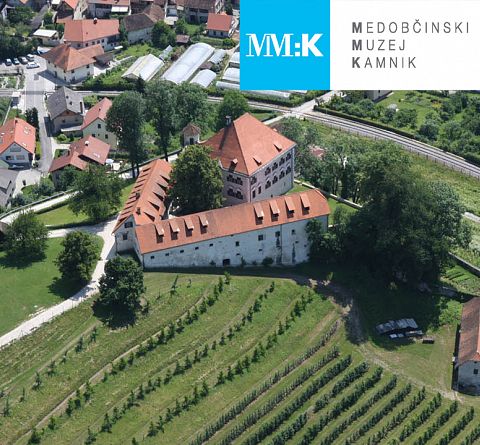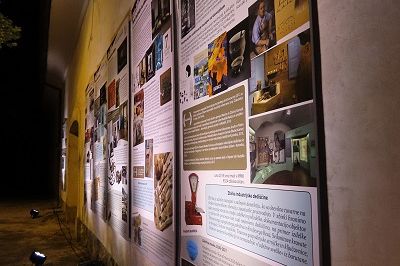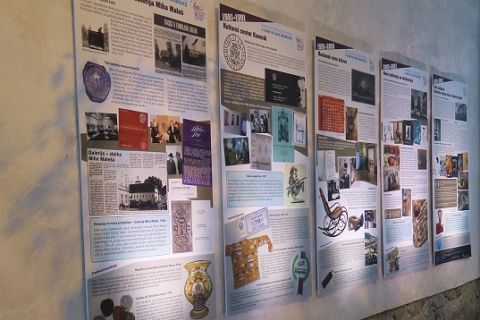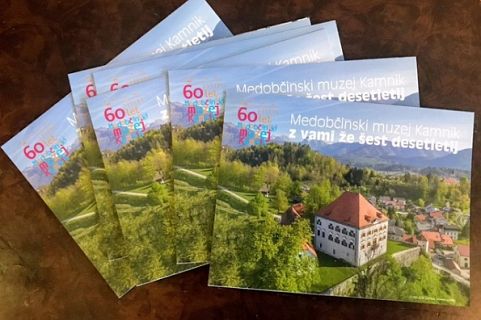Intermunicipal museum Kamnik - with you for six decades
On December 4, 1961, the Kamnik Museum was established. The Renaissance-Baroque castle complex of Zaprice was intended for its operation, but it was in a rather poor condition when it was taken over. By the spring of 1962, it housed another 17 clients.
Ever since 1962, the buildings in the castle complex have been systematically and thoroughly renovated, researched and renovated for museum activity. Thus, in the autumn of 1963, during the renovation works on the ground floor of the castle, older walls were discovered, presumably the foundations of a pre-Renaissance mansion. The buildings of the castle complex were gradually renovated from the foundations to the roof, from demanding static problems of buildings, electrical installation, telephone system, central heating, sewerage and plumbing, joinery and facades to meet museum standards in exhibition and depot spaces.
The first director of the newly established museum was prof. Srečko Zabrič, who after 1963 took over the management of the Public Library in Kamnik. From 1963 to 2002, archaeologist Mirina Zupančič was a director, who professionally led the adaptation of the entire Zaprice castle complex. Since 2002, the museum has been run by mag. Zora Torkar, also curator of history and ethnology.
On the basis of the Act on the Realization of the Public Interest in Culture, the Intermunicipal Museum Kamnik was established in 2004 as the legal successor, established by the Municipality of Kamnik, the Municipality of Komenda and the Municipality of Trzin. At the same time, MMK performs the state public service of museums in the area of eight municipalities.
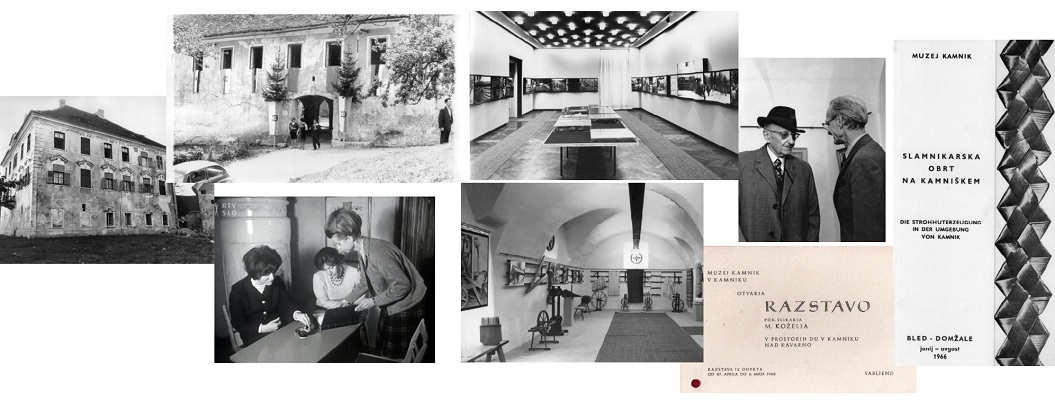
Acquisition of new locations or units
Miha Maleš Gallery, 1980
In 1978, a native of Kamnik, Slovenian artist Miha Maleš (1903–1987) expressed his wish to donate his works to the town of Kamnik on the occasion of its 750th anniversary. For this purpose, in 1979 the first floor and attic of the old burgher house on Glavni trg 2 were renovated. On 18 July 1980, the Gallery – Collection of Miha Maleš was officially opened. The artist donated 2560 works, of which 60 paintings and a series of bibliophilic editions, and especially graphics.
Birth house of Rudolf Maister, 2013 and 2018
Initiatives for renovation and partial renovation began before 1990, when the house was still owned by the Municipality of Kamnik. In 2012, the Municipality of Kamnik and the Kamnik Parish Office agreed on the ownership ratio. The municipality of Kamnik became the owner of the majority of the ground floor. In the renovated rooms, a museum shop, a permanent exhibition about Rudolf Maister and a smaller pedagogical room were opened on 23 November 2013. In 2017, the Municipality of Kamnik bought and renovated the remaining part of the ground floor. On March 28, 2018, the main hall was opened with restored paintings from the second half of the 19th century, a room for occasional exhibitions and a pedagogical room.
Gallery View, 2016
Gallery View was opened in 2016 on the second floor of the Miha Maleš Gallery. This is an exhibition space intended for contemporary art production, and every year it opens its doors to one student, who is proposed by the Faculty of Education and / or the Academy of Fine Arts and Design in Ljubljana. Thus, with the exhibition, we offer young artists who are just beginning their journey an open door to the world of art and their own recognition.
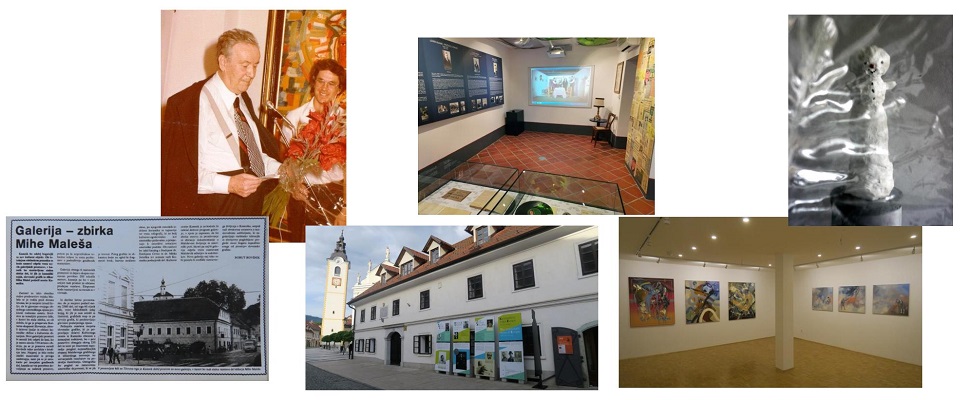
Among museum objects, we are most proud of collections of national importance:
Sadnikar’s collection
Josip Nikolaj Sadnikar (1863-1952) was a veterinarian, patron and collector. In 1893, in his house in Šutna in Kamnik, he founded the first private museum collection in Slovenia, which was open to the public, t.im. “The Orchard Museum.” In 60 years, he has collected around 4,000 objects from various fields: archeological, objects for everyday use, to specialties and valuables such as originals, manuscripts, archival documents and valuable works of art. In 1964, 1468 items were purchased for the newly established museum in Zaprice.
Thonet Furniture Collection
In 1969, an exhibition of Thonet’s curved furniture was opened. This exhibition also created the largest collection of Thonet furniture in Slovenia, as the museum together with the Stol factory collected products of bent furniture from factories operating in Slovenia with the “old for new” campaign.
Open -air museum of granaries from the Tuhinj valley
In 1973, one of the first open-air museums in Slovenia was founded – the open-air museum of the granaries from the Tuhinj Valley, for the protection of which the conservator of the Kranj ZVKD Peter Fister and the ethnologist of the Kamnik Museum Majda Fister were most responsible. Valentin Cukjati, the caretaker, played an invaluable role in the relocation and erection of granaries in Zaprice. At the end of 1973, the first three granaries were moved, including the oldest one from Sidol from 1793.
Vlasta Kopač Collection
In 2007, 486 items from the private collection of Vlasto Kopač (1913–2006) were purchased with the help of funds from the Municipality of Kamnik. It contains an extremely rich collection of notes, photographs, sketches, plans, maps, illustrations and an exceptional collection of pastoral objects from Velika planina. The collection of pastoral heritage began to emerge in the 1930s and was supplemented by the 1980s.
Industrial Heritage Collection
The collection began to take shape in the last decade, when many factories in the wider Kamnik area stopped production. The collection includes small machines and tools, products and semi-finished products, documentation of facilities and work processes as well as intangible heritage, such as products of Thonet’s bent furniture and Rex of Niko Kralj, Svilanit’s ties and towels, Svit’s majolica, Titan’s household machines and locks, “miracle candles” made of gunpowder ect.
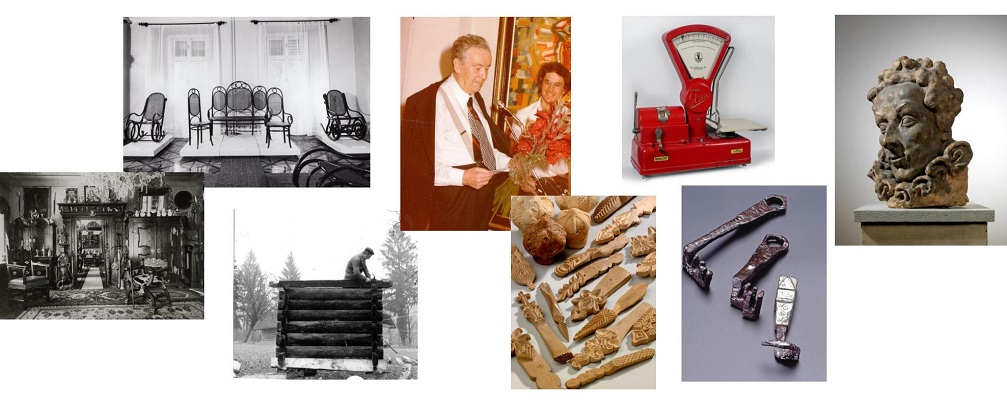
New experiences for visitors
After 2005, pedagogical and andragogical programs received a new impetus. We have prepared a number of new pedagogical programs, such as: presentation of museum professions in suitcases; manuals and aids, museum workshops – living in the past with costumes, props and a reconstructed scene from different time periods, interactive corners at permanent and occasional exhibitions, etc.
An art history study circle has started operating for adults, where participants still get to know domestic and world art and visit galleries.
We also brought the heritage closer to Slovenian cultural holidays in a different way with many other public events, such as concerts, lectures, evenings, public guided tours, open days, museum summer nights, happy cultural days and Slovenian cultural holidays.
From 2018, with special adaptations and aids, we will enable the accessibility of cultural heritage also to people with special needs.
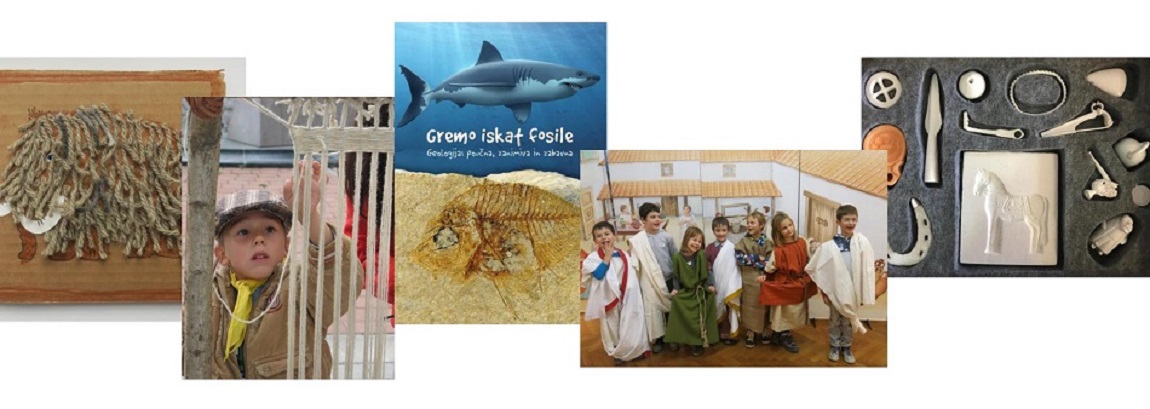
Exhibitions
Between 2011 and 2021 we prepared as many as 127 exhibitions and guest appearances: Permanent exhibitions: Reflections of the Millennium of Kamnik, Stories in Stone – Lapidary, about the pastoral heritage on Velika planina, about Miha Maleš and Kamnik artists, about Rudolf Maister and occasional: Tone Knaflič, Where all the factories went, On gunpowder barrel, Slovenian majolica, Polde Mihelič, older painting collection, Dušan Lipovec, Dušan Sterle, Maks Koželj, Vladimir Makuc, Berko, Faces of everyday war, The man of words and spirit, About Rudolf without a mustache, May Declaration, Carinthian Plebiscite 1920, etc.
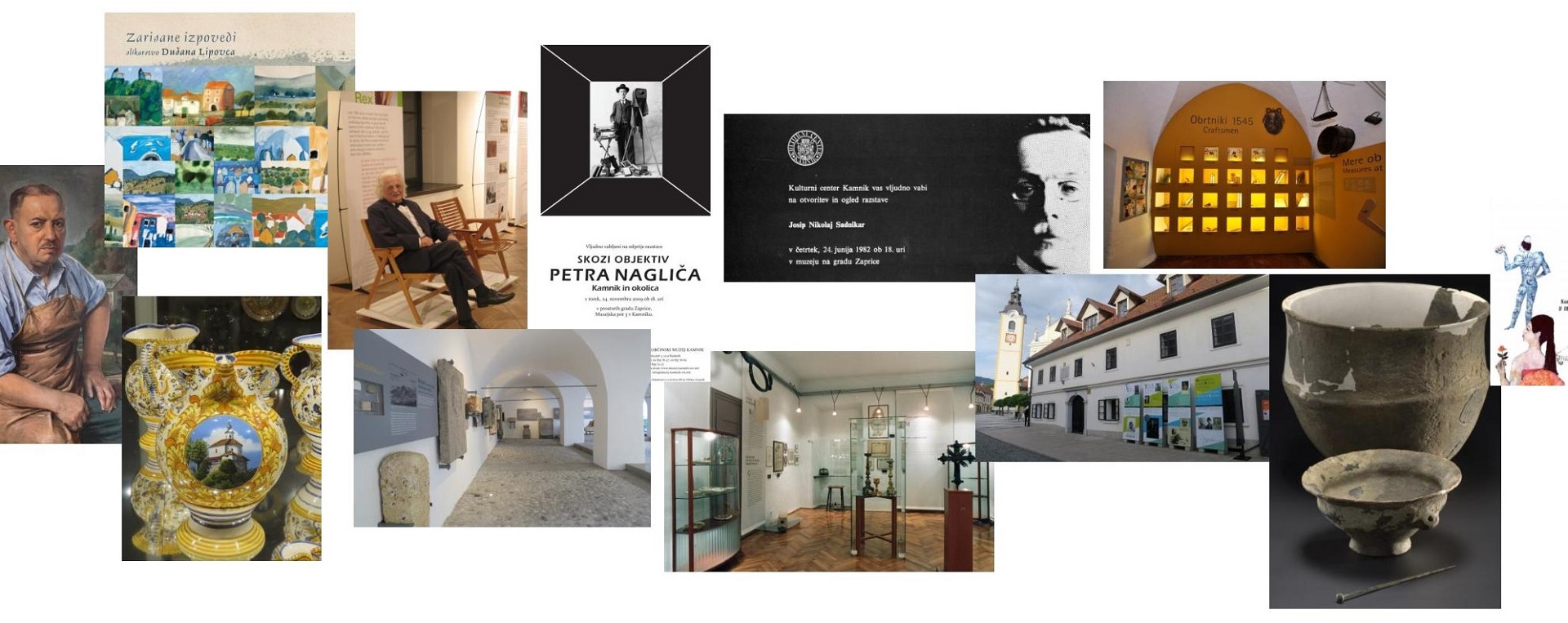
Objects that have accompanied us in everyday life during the six decades of the museum’s operation:
 The story of the popular Kamnik Regiment (Happy in Kamnik), 1965
The story of the popular Kamnik Regiment (Happy in Kamnik), 1965
Probably the most popular song about Kamnik was released on a 10-inch vinyl record in 1965, a song that was originally called Kamniška polka, but we all know it only as Veselo v Kamnik – after the first verse of the text. Andrej Blumauer’s composition was recorded for the first time by members of the Boris Kovačič Ensemble. The regiment was sung by the wife of the band leader and accordionist Boris Kovačič, Stanko Kovačič, and Danilo Čadež. The people of Kamnik eventually adopted her, identified with her and granted her the status of an unofficial Kamnik anthem.
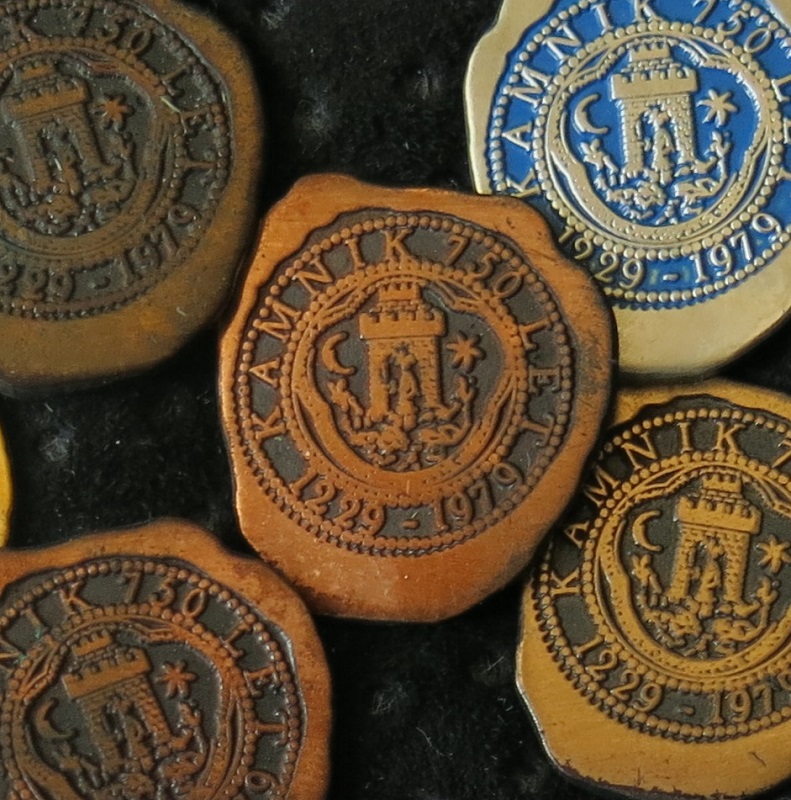 Badges on the 750th anniversary of the city, 1979
Badges on the 750th anniversary of the city, 1979
On the occasion of the 750th anniversary of the first written mention of the citizens of Kamnik, the municipality of Kamnik, in cooperation with cultural institutions and associations, prepared a rich program: various exhibitions, events that took place throughout the year; she organized a scientific symposium and published a ceremonial proceeding. Among other things, a collection of commemorative badges in the form of a seal with the motif of the coat of arms of Kamnik and the inscription Kamnik 750 years 1229–1979 was published.
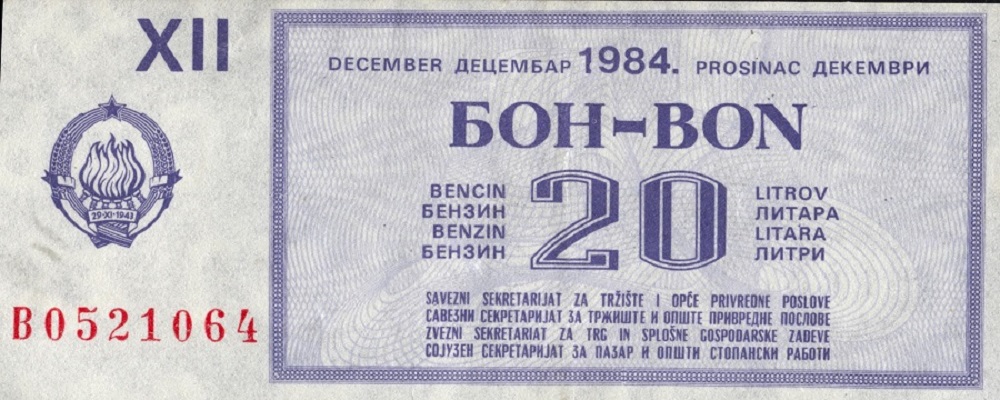 Petrol vouchers, 1982–1984
Petrol vouchers, 1982–1984
Vouchers for the purchase of fuel were introduced by the Yugoslav federal government in 1982 and were valid until 1984. At that time, credit bills began to arrive and with this measure they wanted to limit the consumption of foreign exchange. The vouchers were divided into three months at local community headquarters. The driver of the car was entitled to 40 liters of fuel per month, and the owners of sprayers and chainsaws had to come to terms with five liters of fuel per month. In order to obtain as many vouchers as possible, citizens bought almost used tractors, additional personal vehicles, and sales of saws, sprayers and mowers increased rapidly.
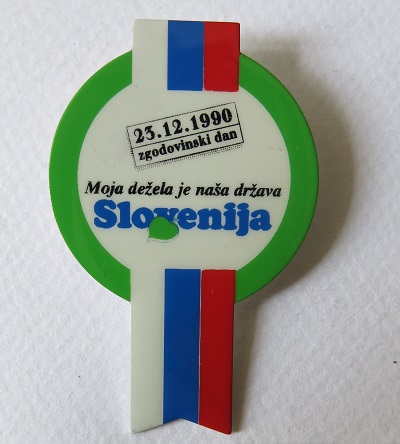 Badge at the plebiscite for independent Slovenia, 1990
Badge at the plebiscite for independent Slovenia, 1990
On 23 December 1990, a plebiscite was held in which voters decided on the independent state of Slovenia. There were 1,499,294 eligible voters. At the plebiscite, 93.2% of eligible voters cast their ballots, while 1,289,369 people or 88.5% of all votes cast. The badge has the shape of a circle with the Slovenian tricolour and the inscriptions: 23 December 1990 historical day and below My country is our country Slovenia with a linden leaf.
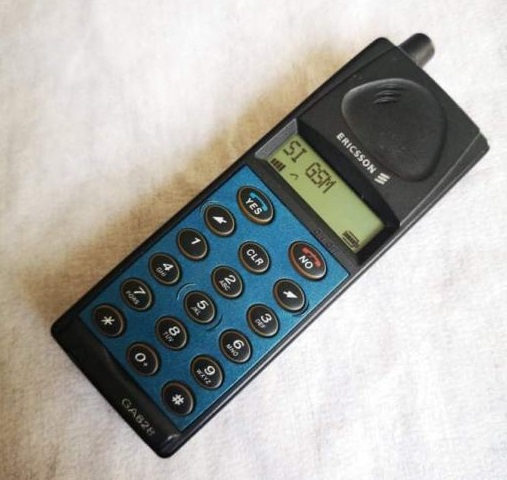 Mobireglja – mobile phone, 1998
Mobireglja – mobile phone, 1998
In the autumn of 1991, the first public mobile telephony system started operating in Slovenia. In 1998, Mobireglja was one of the first mobile phones to be affordable. With a price of 19,900 tolars, it was significantly cheaper than the competition. He had to thank the fact that he worked “on cards” for his sales success. It was much larger (13 cm) and heavier (160 grams) than most mobile phones today, it had a simple green-black screen on which there was room for only one line of text (12 characters).
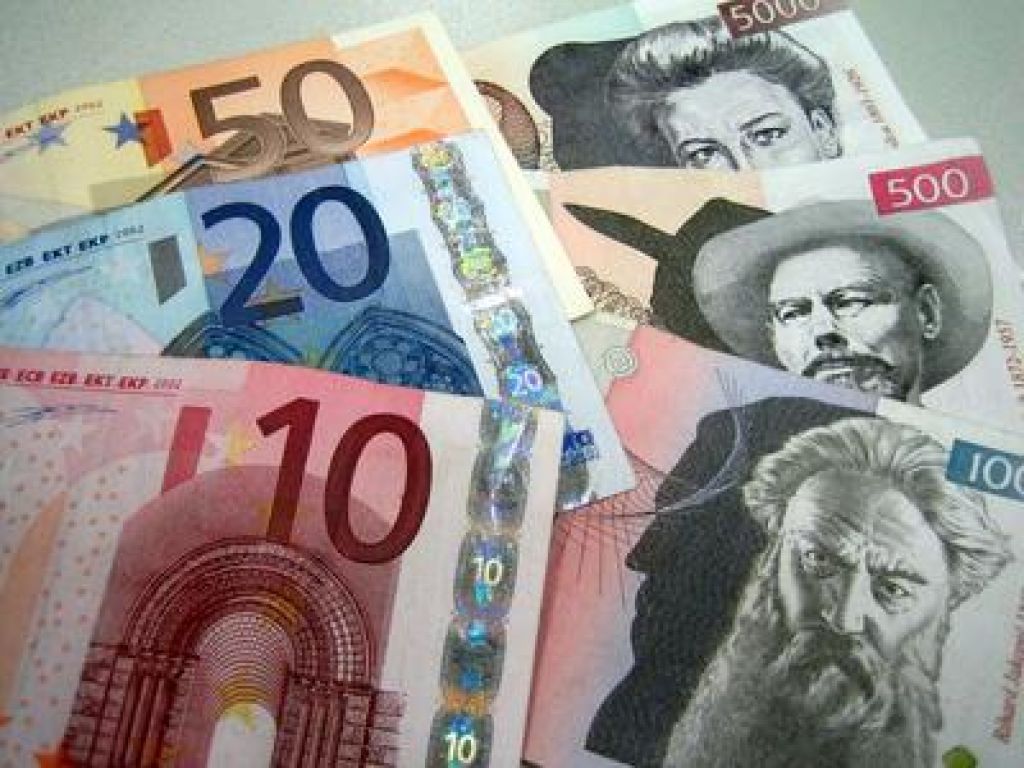 Slovenian tolar, 1991–2006
Slovenian tolar, 1991–2006
From 8 October 1991 to 31 December 2006, the currency of the Republic of Slovenia was the tolar, which was divided into 100 hundredths. The abbreviation SIT was used in money transactions.
The coins were designed by Miljenko Licul and Zvone Kosovelj and modeled by the sculptor Janez Boljka. The banknotes were made according to the conceptual designs of Miljenko Licul and Zvone Kosovel, and the portraits for them were made by the painter Rudi Španzel. At various events and for various purposes, the Bank of Slovenia also issued occasional issues. Since 2007, the currency has been the euro, which is the currency in 19 members of the European Monetary Union.
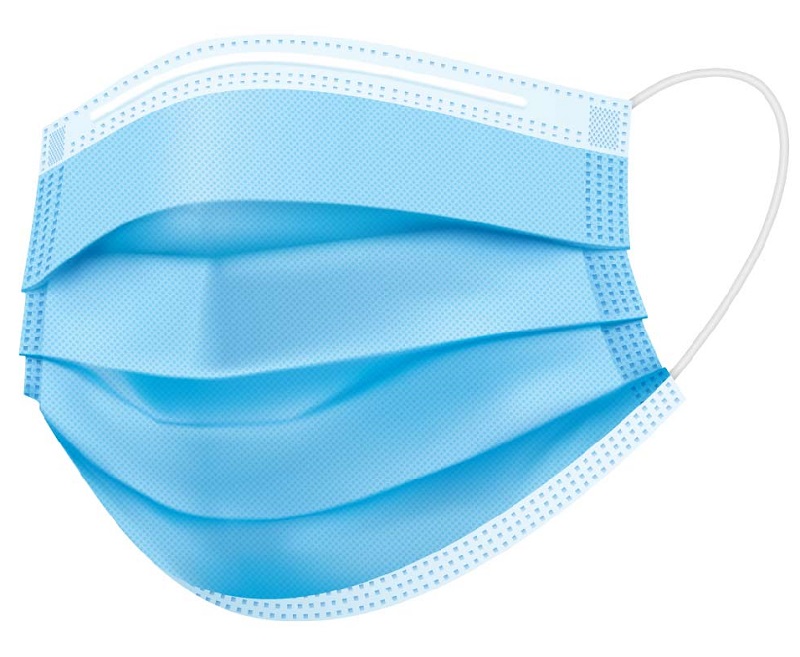 Protective mask, 2020–2021
Protective mask, 2020–2021
Since March 2020, the covida-19 pandemic has also strongly marked everyday life, socializing and attending cultural and other events in Slovenia. In 2020, there were more than a third fewer exhibitions in museums and galleries and almost two-thirds fewer visitors. Museums and galleries have focused on the web and social networks, where content for the virtual space has been published. According to the data collected, 185 web exhibitions were published in 2020.
MMK is an institution where the past and the present meet. Therefore, the museum has a responsibility to modern society to work actively with the environment, creators, institutions, users and guardians of cultural heritage, to promote and develop a positive public attitude towards cultural heritage. The goal is a sustainable and interdisciplinary interpretation of heritage, which is manifested in collections and exhibitions and promotes the cultural identity of the city, the wider environment, groups and the whole community.



